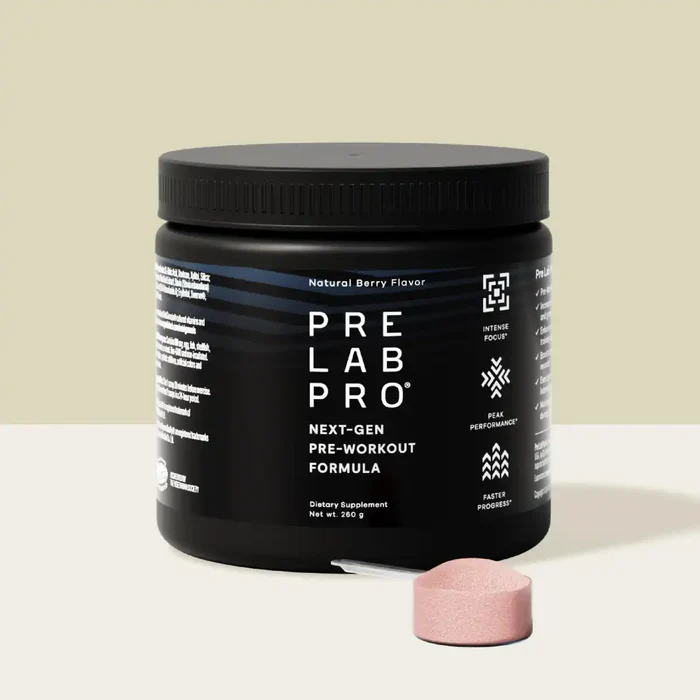Imagine eating copious amounts of watermelon and getting the best workout pump of your life—and we’re not talking about a watermelon-flavored pre-workout; we’re talking about the real stuff.
Thanks to one compound native to watermelon, it is possible—but highly unlikely based on the amount you’d have to eat.
But in any case, watermelon is one of the few concentrated natural sources of the amino acid L-citrulline. You’ll also find it packed into fitness supplements left, right, and center. Why? Check out its pump properties.
Although its primary role is to detoxify ammonia, it also is a potent vasodilator, and when your veins open up, and blood comes rushing through, you can guess what happens—you get the pump.
The pump is what every fitness fanatic chases, and while it can be achieved with many supplements, nothing does it as well as citrulline.
If you’re one of those chasing the pump and haven’t been successful with citrulline, we’re breaking down the details on how much you need to get the ultimate pump.
And if you stick around to the end, we’ll also give you the best place to find it. Hint: it’s not watermelon!
Key Takeaways
- Effective gym doses: 6–8 g/day of pure L-citrulline or ~8 g/day citrulline malate (2:1) before training.
- Benefits: better nitric oxide, blood flow, “pump,” endurance and reduced perceived exertion.
- Stacking: pair with beet, glutathione and electrolytes for fuller pumps and sustained performance.
- Timing: 30–60 minutes pre-workout; daily use supports consistency on high-volume phases.
- Tolerance: generally well-tolerated; start lower if you’re new to citrulline.

What Is L-Citrulline?
Commonly seen on fitness supplement labels galore, L-citrulline is a non-essential amino acid that’s endogenously produced by the liver and intestine but also found naturally in foods like cucumber, squash, pumpkins, and watermelon.
But unlike most amino acids used to build proteins, citrulline can form peptide bonds but does not participate in protein synthesis.
Instead, citrulline plays an essential role in the urea cycle, where it’s involved in facilitating the detoxification of ammonia and inhibiting additional glycolysis [1]. It also serves as the precursor for L-arginine, a substrate required for nitric oxide (NO) synthesis [2].
L-citrulline has gained much popularity for its beneficial effects on cardiovascular health, skeletal health, and adipose tissue metabolism, but in the fitness community, its vasodilating effects remain king [2].
As a precursor to L-arginine and, therefore, NO, increasing your intake of L-citrulline increases blood vessel dilation, boosts blood flow, and promotes the ‘pump’ that lifters crave.
How Does L-Citrulline Work?
Citrulline has several essential functions in the body, but when we’re chasing the pump, there’s one we look at—vasodilation. Upon consumption of L-citrulline, it’s immediately converted into another amino acid, L-arginine, which is then converted to nitric oxide.
Nitric oxide may be a small molecule, but it’s super powerful—and it also happens to be one of the most essential chemical messengers in the body involved in most cellular and organ functions.
We’re talking about blood pressure regulation, cellular signal transmission, immune responses, and more [3].
NO is so powerful because it’s a primary regulator of vascular tone and blood flow via the activation of soluble guanylate cyclase (sGC) in vascular smooth muscle [4]. However, L-arginine alone isn’t all that effective for boosting No production.
However, studies show that citrulline may increase arginine levels to a greater extent than arginine alone, mainly due to how the body processes and absorbs arginine and citrulline [5].
By increasing nitric oxide and boosting blood flow to active muscle tissue, citrulline offers enormous benefits for exercise performance.
But that’s not all—while it may not be involved in building proteins, it can enhance muscle protein synthesis by stimulating a key signaling pathway in muscle growth [5, 6].
Health Benefits Of L-Citrulline
We’re not going to get into the details of the benefits of citrulline, but there are plenty worth noting:
- Improves exercise capacity
- Increases blood flow
- Reduces blood pressure
- Improves cardiac function
- Enhances cognitive performance
- Boosts immunity
What L-Citrulline Dose Gives The Ultimate Pump?
By now, you’re probably already sold on using citrulline pre-workout, but how much do you need to achieve the ultimate pump?
While every person is different, and the dose that gives one person the ultimate pump may not be the same as another, there is a recommended amount for optimal effects.
When it comes to citrulline supplementation, there are two forms:
- L-citrulline
- Citrulline malate
The difference between them is that citrulline malate is L-citrulline combined with malic acid, a natural substance found in fruits that plays a role in energy metabolism.
Little research is available on the benefits of malic acid, but some rodent studies show it can enhance endurance. However, there is a fair bit of evidence on citrulline malate as a performance enhancer.
For non-exercise-related benefits, you’ll want about 3 grams of L-citrulline or 5 to 6 grams of citrulline malate per day.
For performance improvements, including the pump, aim for 3 to 5 grams of L-citrulline or 6 to 8 grams of citrulline malate daily. Studies don’t recommend going over 10 grams daily, as higher doses aren’t necessarily effective [7].
For specific uses, here are some guidelines:
- Weight training: 8 grams of citrulline malate provides about 4.5 grams of citrulline [8, 9]
- Muscle oxygenation: 6 or more grams of L-citrulline per day for seven days [10]
- Blood pressure: 3–6 grams per day of L-citrulline
L-Citrulline + L-Glutathione: The Ultimate Pump Duo
While L-citrulline may be one of the best supplements for increasing NO and blood flow, you have to consider that nitric oxide is a highly unstable molecule that breaks down quickly in the bloodstream. If you want to maintain its beneficial effects, you have to prolong its life.
How? Meet glutathione (GSH), the peanut butter to citrulline jelly. It’s the other half of the equation.
Thanks to glutathione’s antioxidant properties—it’s the body’s most powerful and important antioxidant—it plays a fundamental role in buffering nitric oxide (NO) [11].
Because active skeletal muscle produces reactive oxygen species, the demand for antioxidants during exercise increases, so GSH swoops in to neutralize radicals, prevent damage, and maintain NO levels in the blood.
A 2015 study looked at the effectiveness of L-citrulline and/or GSH supplementation on markers indicative of NO synthesis [12].
Researchers found that oral supplementation with Setria® Glutathione and L-citrulline can increase blood levels of nitrite, nitric oxide, and cGMP more than the placebo.
Based on this, we can suggest that Setria® Glutathione combined with L-citrulline enhances NO levels and may sustain levels by preventing oxidation.
Simply put, if you want to maintain the pump achieved by citrulline, pair it with glutathione, and adding Setria® Performance Blend (L-glutathione + L-citrulline) does exactly that.
References
- Takeda K, Machida M, Kohara A, Omi N, Takemasa T. Effects of citrulline supplementation on fatigue and exercise performance in mice. J Nutr Sci Vitaminol (Tokyo). 2011;57(3):246-250.
- Allerton TD, Proctor DN, Stephens JM, Dugas TR, Spielmann G, Irving BA. l-Citrulline Supplementation: Impact on Cardiometabolic Health. 2018;10(7):921.
- Lowenstein CJ, Dinerman JL, Snyder SH. Nitric oxide: a physiologic messenger. Ann Intern Med. 1994;120(3):227-237.
- Luiking YC, Engelen MP, Deutz NE. Regulation of nitric oxide production in health and disease. Curr Opin Clin Nutr Metab Care. 2010;13(1):97-104.
- Bahri S, Zerrouk N, Aussel C, et al. Citrulline: from metabolism to therapeutic use. Nutrition. 2013;29(3):479-484.
- Jourdan M, Nair KS, Carter RE, et al. Citrulline stimulates muscle protein synthesis in the post-absorptive state in healthy people fed a low-protein diet - A pilot study. Clin Nutr. 2015;34(3):449-456.
- Allerton TD, Proctor DN, Stephens JM, Dugas TR, Spielmann G, Irving BA. l-Citrulline Supplementation: Impact on Cardiometabolic Health. 2018;10(7):921.
- Pérez-Guisado J, Jakeman PM. Citrulline malate enhances athletic anaerobic performance and relieves muscle soreness. J Strength Cond Res. 2010;24(5):1215-1222.
- Wax B, Kavazis AN, Weldon K, Sperlak J. Effects of supplemental citrulline malate ingestion during repeated bouts of lower-body exercise in advanced weightlifters. J Strength Cond Res. 2015;29(3):786-792.
- Bailey SJ, Blackwell JR, Lord T, Vanhatalo A, Winyard PG, Jones AM. l-Citrulline supplementation improves O2 uptake kinetics and high-intensity exercise performance in humans. J Appl Physiol (1985). 2015;119(4):385-395.
- Baldelli S, Ciccarone F, Limongi D, Checconi P, Palamara AT, Ciriolo MR. Glutathione and Nitric Oxide: Key Team Players in Use and Disuse of Skeletal Muscle. Nutrients. 2019;11(10):2318.
- McKinley-Barnard S, Andre T, Morita M, Willoughby DS. Combined L-citrulline and glutathione supplementation increases the concentration of markers indicative of nitric oxide synthesis . J Int Soc Sports Nutr. 2015;12:27.















